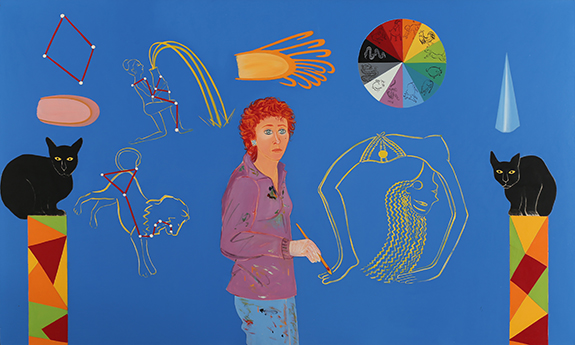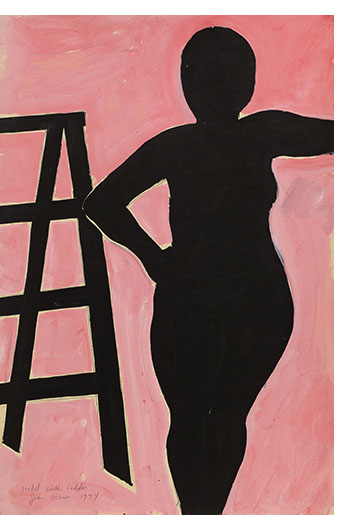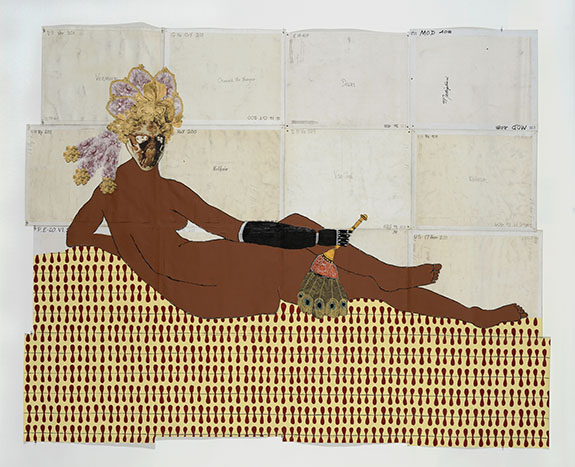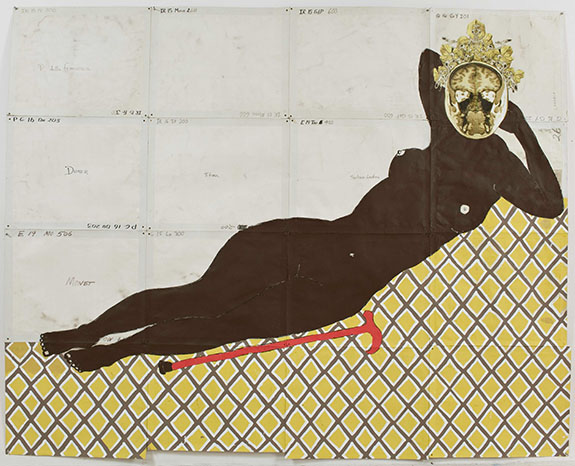 |
 |
Forest — Brown created her own mythology, painting herself amidst things she loved: dogs, cats, fish, friends and household furnishings and, toward the end of her life, symbols of Eastern spiritual practices. Sherwood, one of the most consistently engaging abstract painters working today, continues to explore the effects of a medical crisis that left her partially disabled but emboldened. For the past decade she’s made a fast-evolving series of abstract works that probe the mysteries of the brain by combining ancient symbology with clotted, cracked, carefully controlled paint pours that suggest the physical reality of a brain hemorrhage.
 |
 |
You also can’t help but notice other elements of the Sherwood biography, particularly the presence of a leg brace and a cane. Another piece of it resides in the materials. Sherwood scavenged the prints from the UC Berkeley art department where, after years of instructional use, they were discarded. She painted on the versos, and in the areas left untouched you can easily make out the names of unseen masters: Renoir, Cranach the Elder, Bruegel, Canaletto, Degas, Van Gough and so on. They’re written in pencil. But the biggest transformation has to do with Sherwood’s handling of brain matter; she allows it to spill out of the craniums and into formations that resemble tiaras, in essence “crowning” disability as a kind of beauty – an idea that goes back to naïve art and to Art Brut, things that informed Joan Brown, too.
The difference ‘twixt the two: When you stare at Sherwood’s altered visages they stare back, returning your gaze with a wizened glare that is as inscrutable as the inner workings of the brain itself.